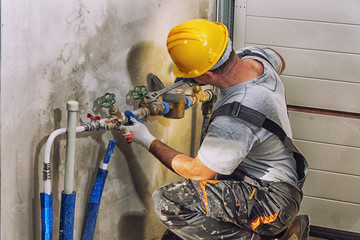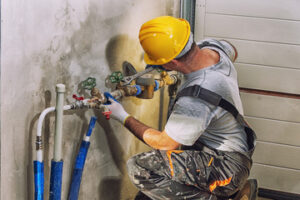Choosing the right Thousand Oaks Kitchen Remodeling Contractor is critical for a successful project. Look for experience, credentials, and clear communication.
During your search, ask friends, neighbors, and coworkers for contractor recommendations. Check online reviews, and verify licensing information. Membership in professional associations like NKBA and NARI is a good indicator of a contractor’s professionalism and commitment to adherence to industry standards.
1. Experience
Bringing a kitchen remodel to fruition requires more than just design talents, and vetting potential contractors thoroughly is key to selecting the right partner. Look for extensive experience specifically in full kitchen remodeling, a strong portfolio, professional affiliations, and open communication styles that align with your preferences.
When interviewing potential contractors, ask for references from previous clients who can provide a firsthand account of their work quality and professionalism. Also, request a detailed estimate for the project that includes costs for materials and labor. This helps you compare estimates and identify any discrepancies, ensuring you get the best value for your money.
In addition to experience, make sure your contractor is licensed to operate in your area and carries liability insurance that covers the renovation process. Ideally, your contractor will offer this information upfront and be willing to verify their licensing details with local authorities for your peace of mind.
If you decide to hire a general contractor for your kitchen remodel, they’ll manage the entire project from planning through completion. Unlike kitchen remodel specialists, general contractors can handle a variety of home improvement projects. As such, they may have insights that can help you with your kitchen remodel if you’re working on a budget. In addition, general contractors can often recommend subcontractors with specialized expertise, reducing the need to hire additional professionals for certain tasks. Also, they can oversee the project to ensure it stays on schedule and within budget. This can reduce the risk of unexpected expenses that may derail your kitchen remodel and potentially increase the cost.
2. Portfolio
The kitchen is one of the most important spaces in any home, and a successful remodel can yield an excellent return on investment if done correctly. It’s important to find a contractor with experience and a strong portfolio of previous kitchen remodeling projects.
As you evaluate potential contractors, review their website and pay special attention to their gallery of past work and client testimonials. You can also ask for a list of clients to contact as references. This will allow you to get an accurate sense of the contractors’ level of professionalism and workmanship.
In addition to evaluating the quality of the contractor’s work, be sure to understand their project management style. This will help ensure your project stays on target and on budget. A contractor who is organized and communicative throughout the renovation process will minimize unforeseen complications.
After you’ve narrowed down your choices, schedule an estimate with each of your top picks. Be sure to clarify what each contractor will include in their proposal and request a detailed contract with estimated costs and timelines for the project.
A reputable contractor will walk you through the entire construction process and answer any questions you have along the way. While you have the right to check in on the job site at any time, you should try not to interfere with the crew’s work as much as possible. The contractor will likely have a checklist or timeline to follow that will keep the project moving in the right direction. Depending on the scope of the project, you may need to install flooring or cabinets before continuing with other tasks like painting, installing appliances, and adding hardware and fixtures.
3. Reputation
The contractor you hire will have a major impact on the outcome of your kitchen remodel. They will handle everything from the design process to demolition to construction to ensure that all aspects of your renovation meet local building codes and follow best practices.
When interviewing contractors, ask for references from past clients to get an idea of their experience and professionalism. If possible, visit projects that have been completed to see the quality of work and if it matches your own vision for your dream kitchen. It is also important to check online reviews and ratings on platforms like Yelp, Google, and Angie’s List to see how the contractor performs in a real-world environment. Look for consistent positive feedback and note if there are any recurring complaints (one-offs may be caused by differing opinions or misunderstandings, rather than indicative of an ongoing problem).
Once you’ve narrowed down the candidates, compare their services, reputations and client reviews, portfolios and estimates against one another. You should also make sure that they have a valid business license and insurance to protect you in case of any mishaps during or after the project. Once you’ve chosen the contractor, make sure that all aspects of your agreement are documented in a contract, including the scope of work, payment schedules, timelines, and warranties.
A kitchen remodeling contractor can take the stress out of your remodel by handling the design and build process, so that you can focus on enjoying your new space. The right contractor can transform an outdated kitchen into a stunning culinary masterpiece, while keeping the budget and timeline in mind. In addition, they can provide advice on how to maximize space, upgrade elements and make the most of your budget.
4. Pricing
A kitchen remodeling project can be a big investment, and it’s important to find a contractor that is competitive with other local contractors and can still provide a quality result within your budget. Ask potential contractors for detailed estimates, including itemized costs and project timelines. Also, make sure that the contractor is licensed and insured. This protects you from liability if the contractor or their subcontractors are injured on your property while performing work.
Once you have narrowed down your list of potential contractors, request a face-to-face interview. This is an opportunity for you to evaluate how well the contractor listens and communicates with you, as well as their overall professionalism. You can ask potential contractors for references from previous clients and examples of their work. You can also ask if they have experience working on kitchen projects that are similar to yours.
During the interview, discuss your vision for your kitchen remodel and how each contractor can help you achieve your goals. Also, ask them to estimate the cost of your project and what types of materials are included in their pricing. It is also a good idea to set aside 10 to 15 percent of your total budget for any unexpected issues that may arise during the renovation, like old plumbing or electrical wiring.
It is also important to consider additional costs like permitting fees, taxes and labor rates when comparing pricing. For example, New Jersey is among the top three most expensive states for construction costs and general contractors, so you’ll want to get area-specific quotes. Also, some contractors include design or architecture services in their quotes while others do not.
5. Communication
As with any relationship, good communication is key to the success of your kitchen remodel. Choosing a contractor who prioritizes clear, concise communication will help eliminate misinterpretations and ensure that you understand the project scope, timelines, and costs. It’s also important to find out how they intend to communicate with you throughout the project.
Ask the potential contractors to provide a detailed breakdown of their services, pricing, and a realistic project timeline. This will allow you to compare estimates and choose the best fit for your project. Be sure to note if the contractor requires a deposit upfront or if you will be paying in installments, and what their payment terms are.
It’s also a good idea to discuss how the contractor will handle permits, compliance with local regulations, and inspections. This will help you avoid any surprise charges down the road and guarantee that your kitchen remodel meets all industry standards.
Finally, it’s a good idea to talk about the types of insurance they carry. This will protect you in case an accident or injury occurs during the project. It’s also common for contractors to use subcontractors, so it’s important to be clear on their qualifications as well.
Although it may not be as fun as selecting paint colors or exploring design trends, finding the right kitchen remodeling contractor is crucial for a smooth, successful project. By asking the right questions, you can rest assured that you’re hiring a reliable and experienced professional who will deliver high-quality results. By following these tips, you can be confident that your remodel will meet and even exceed expectations! Good luck!






